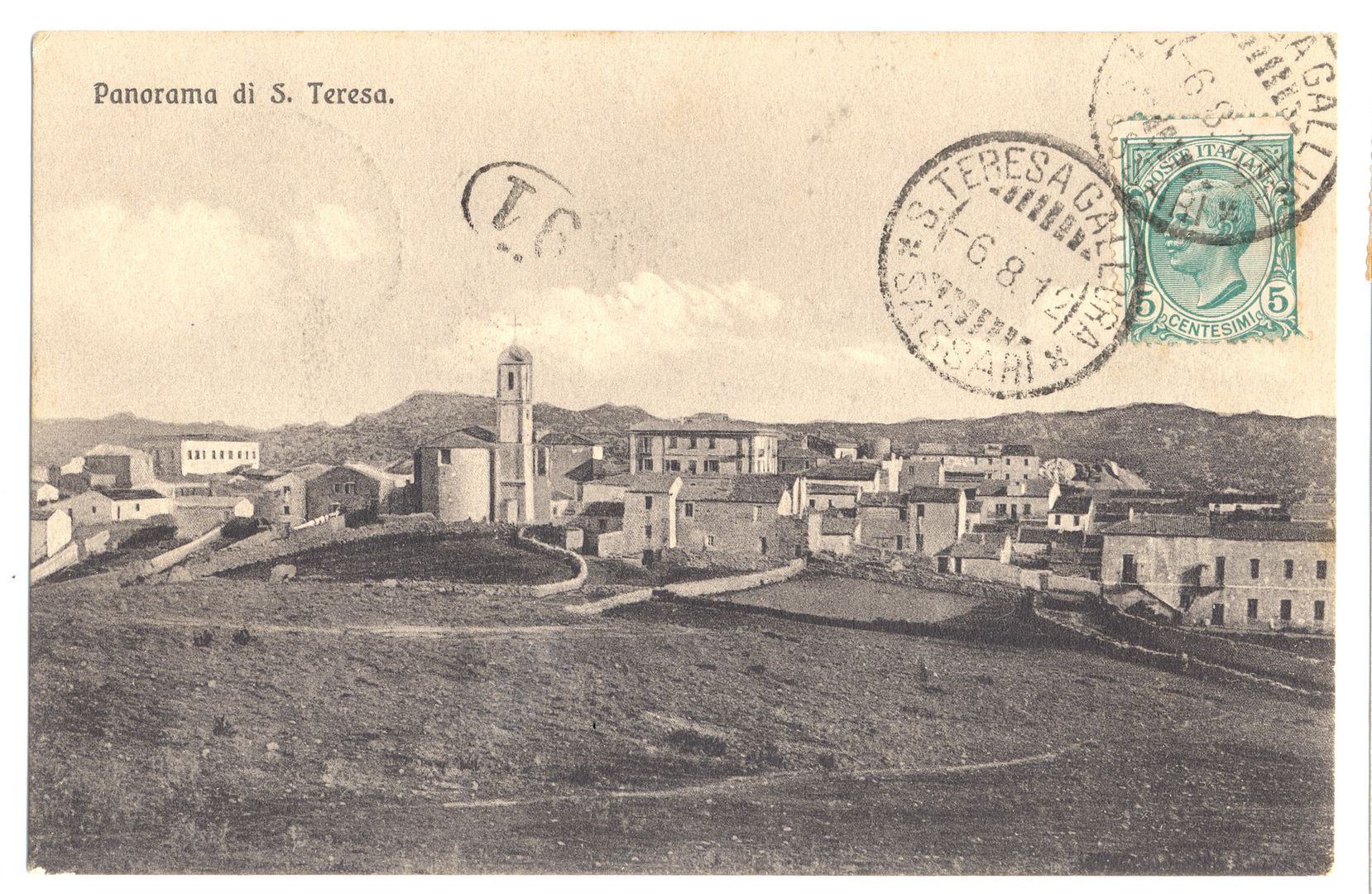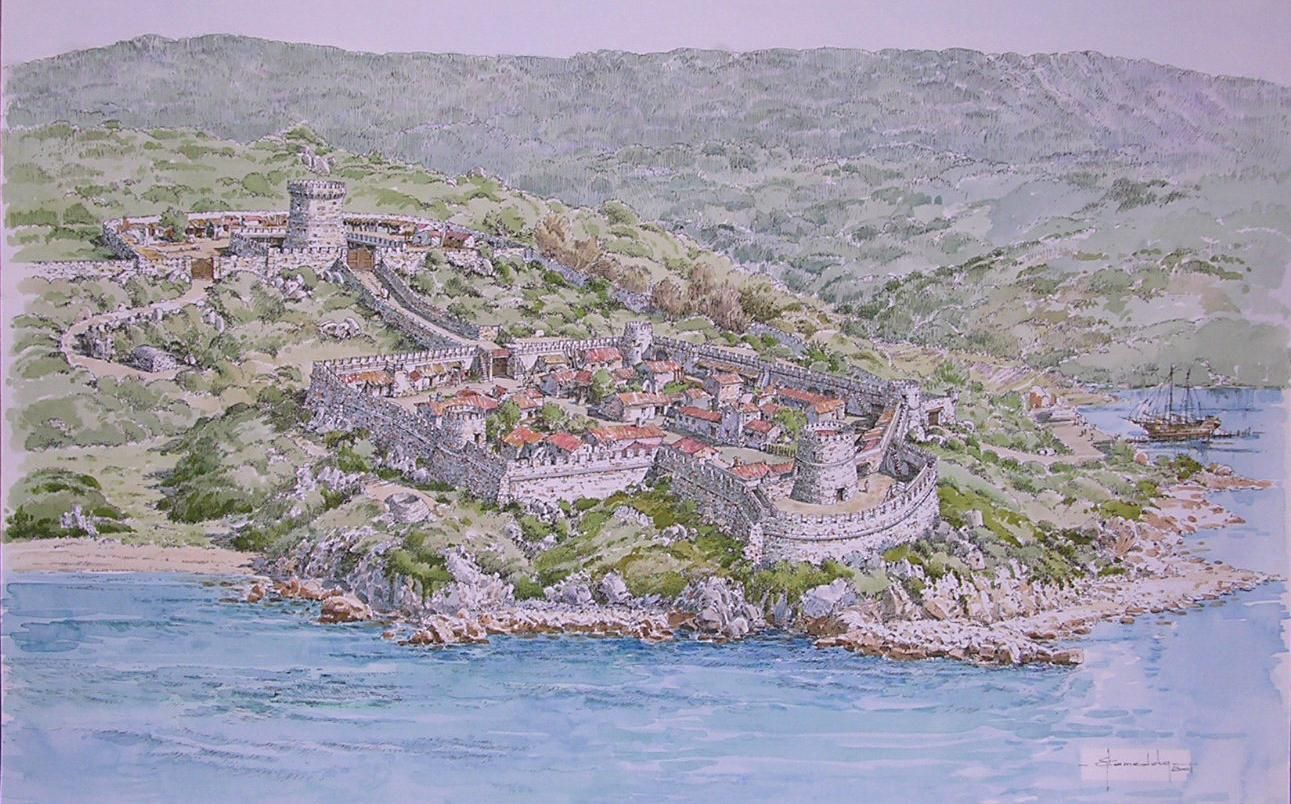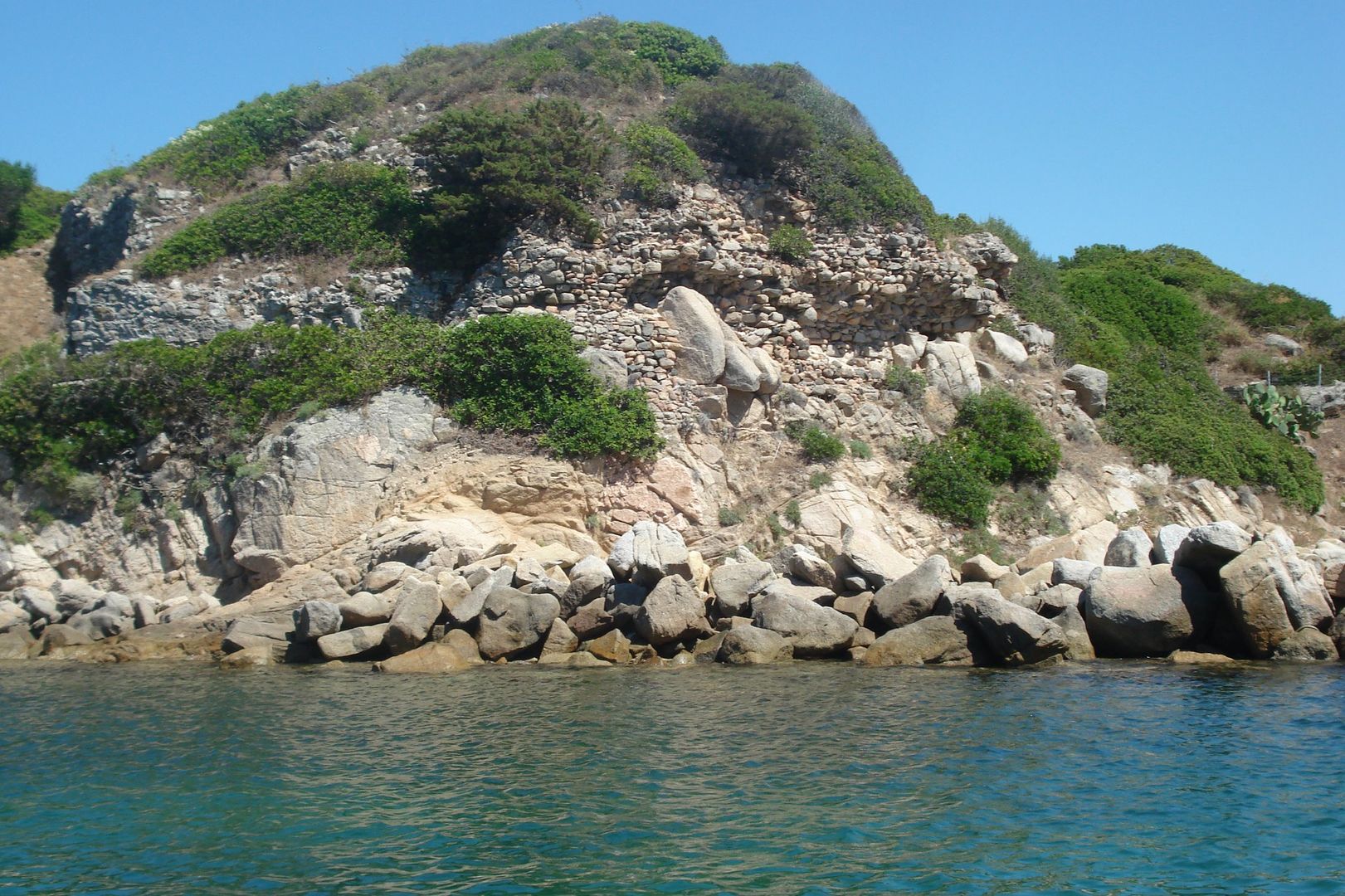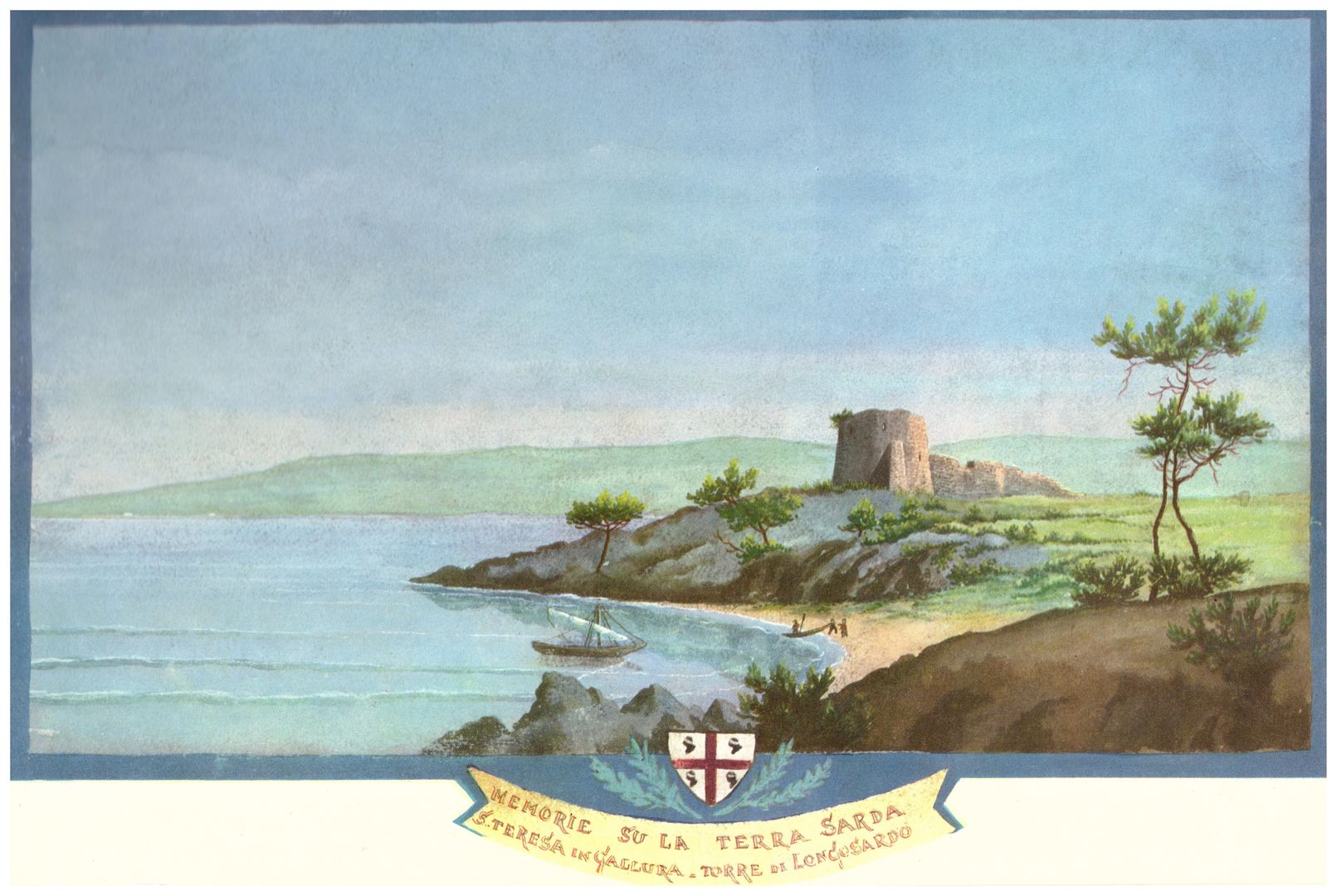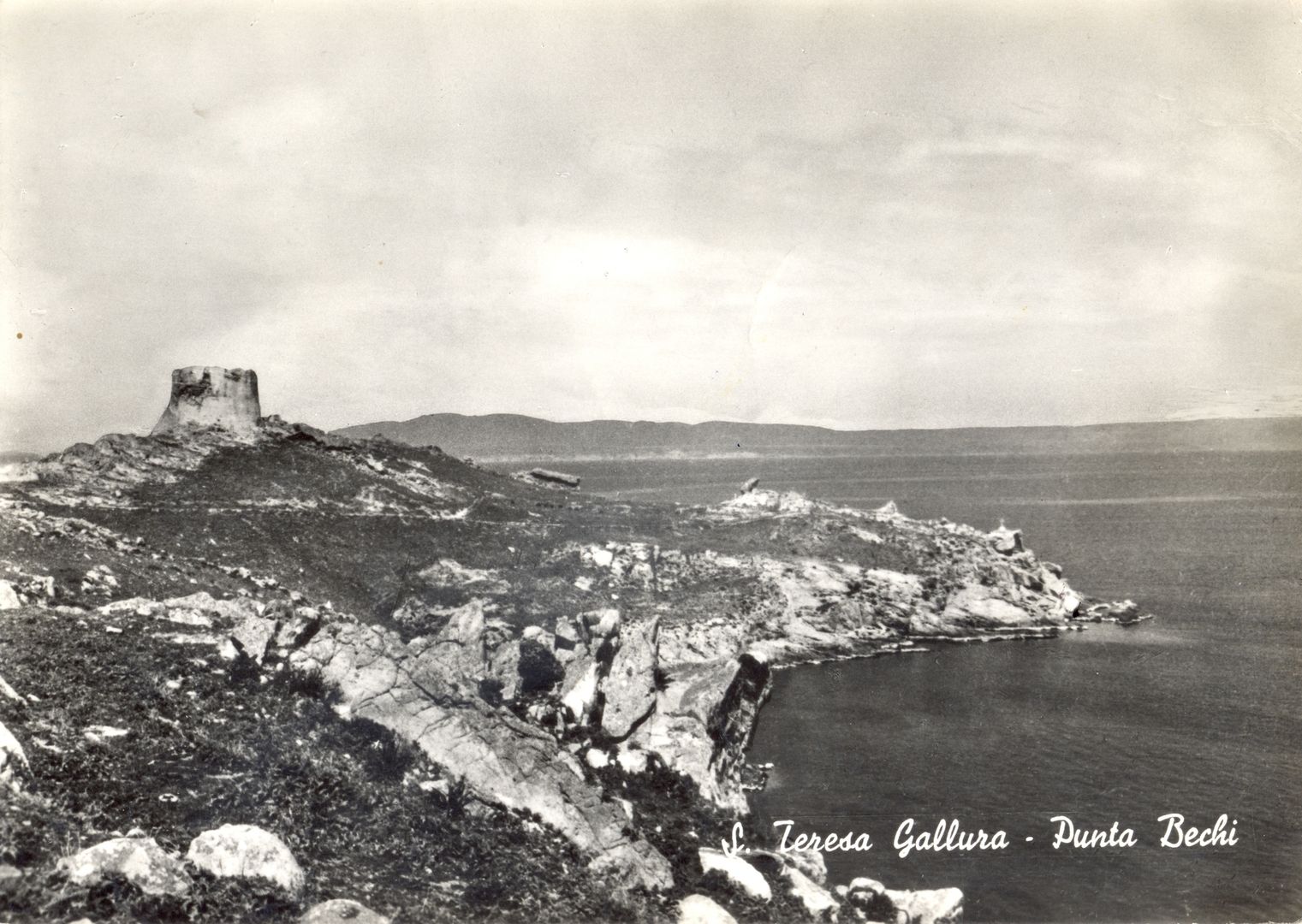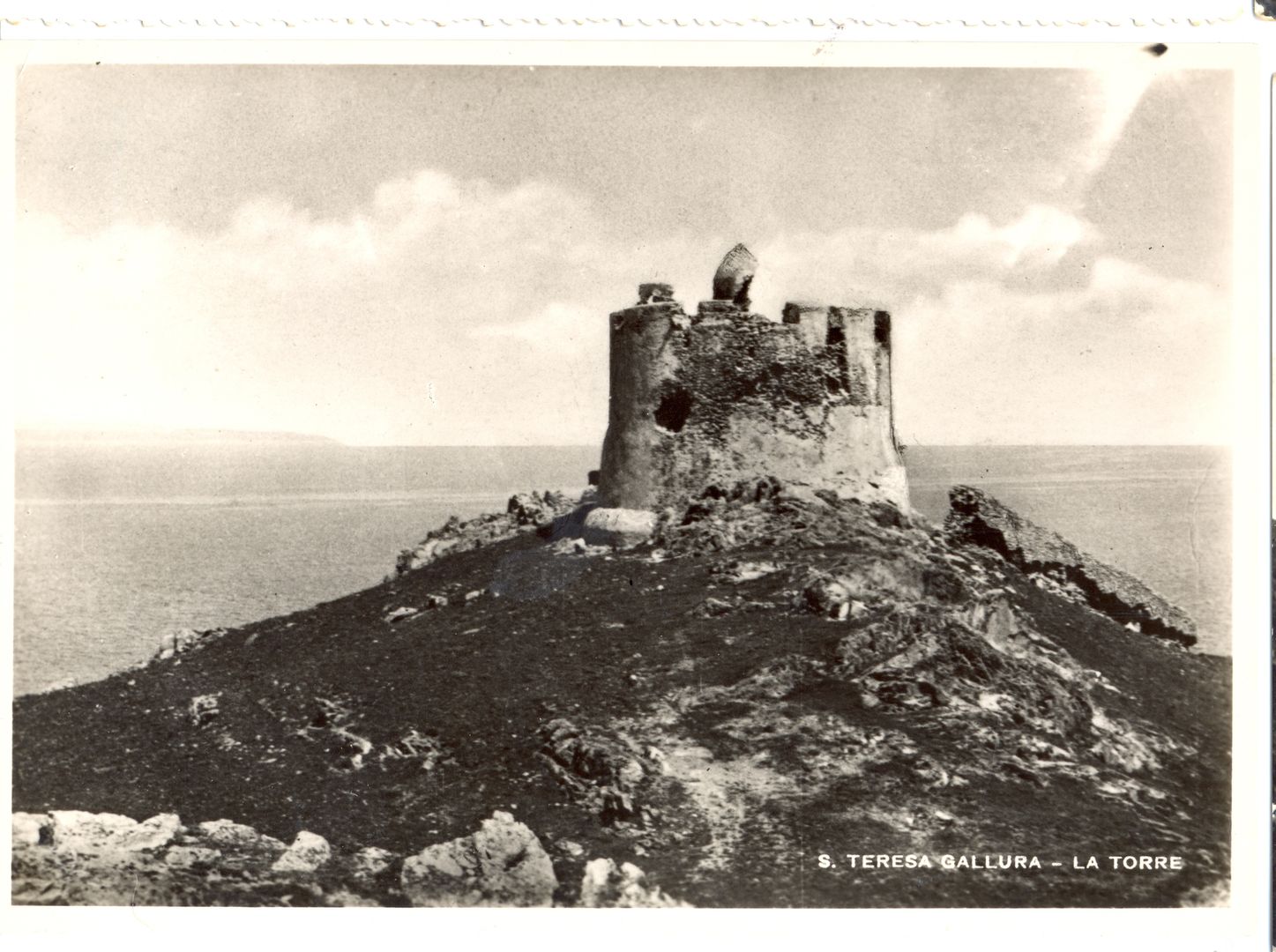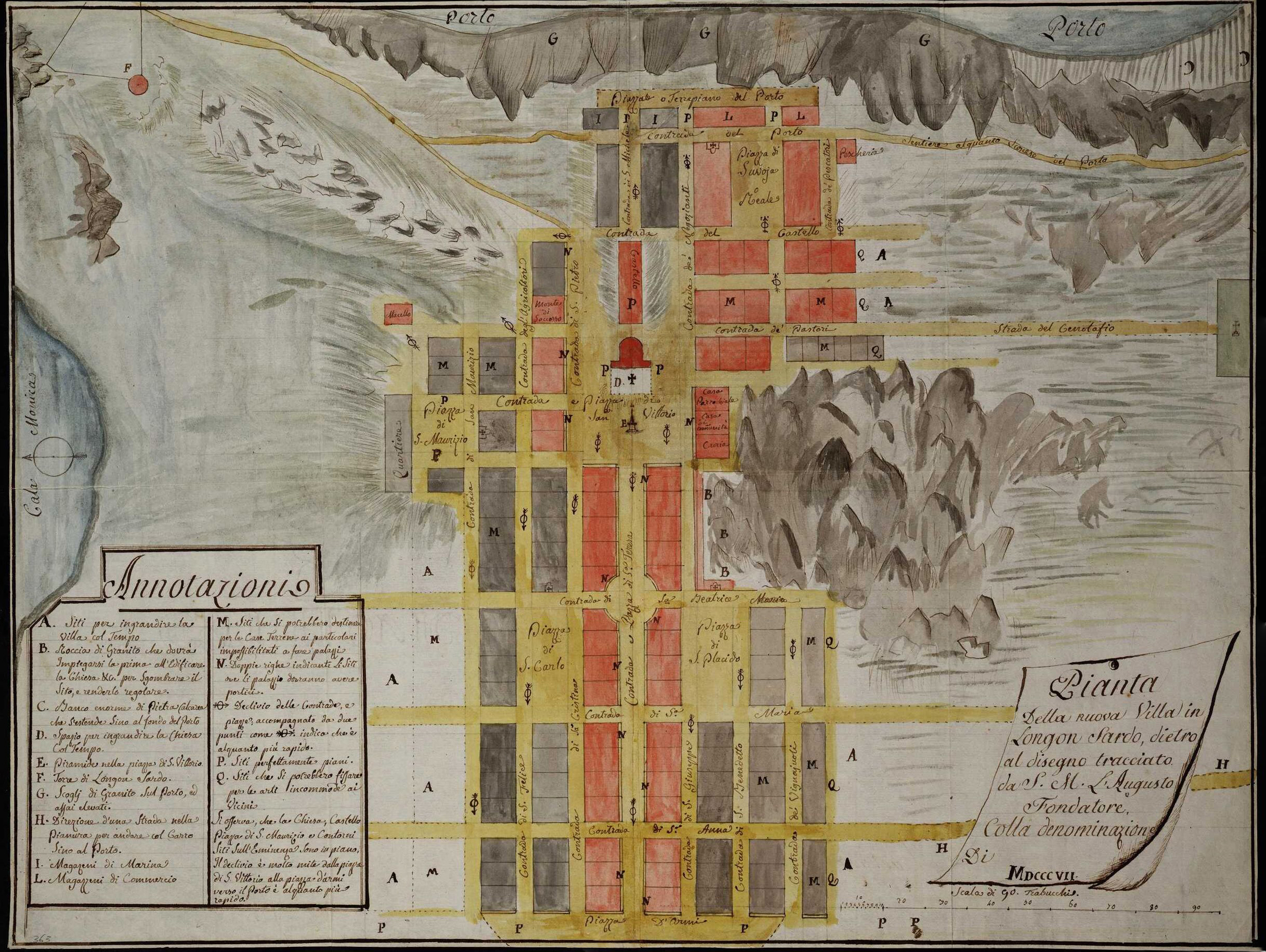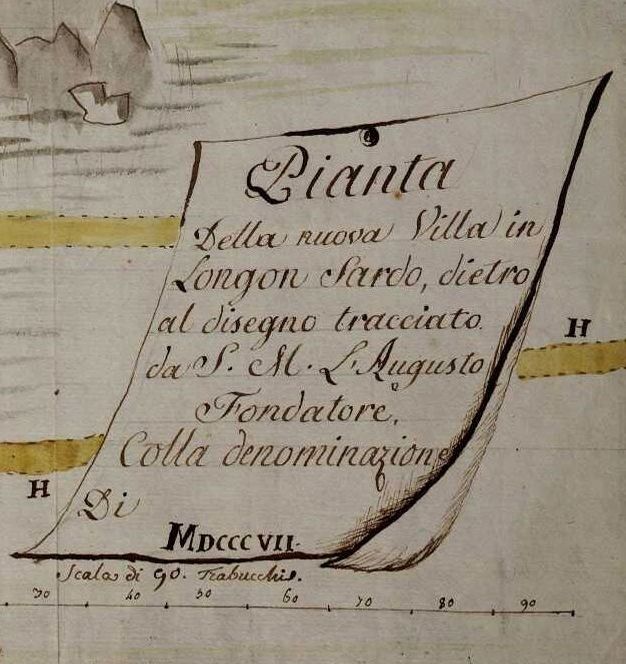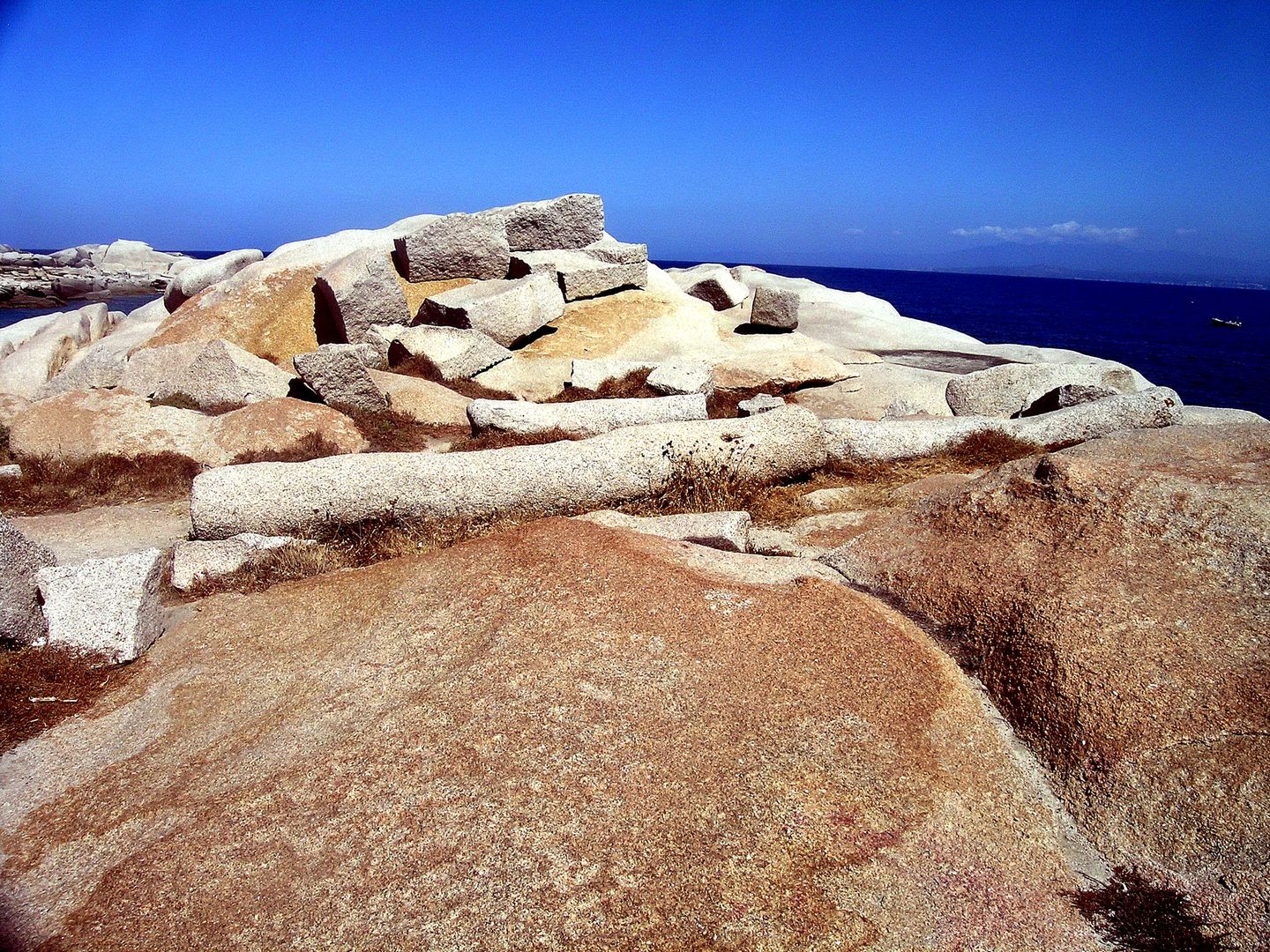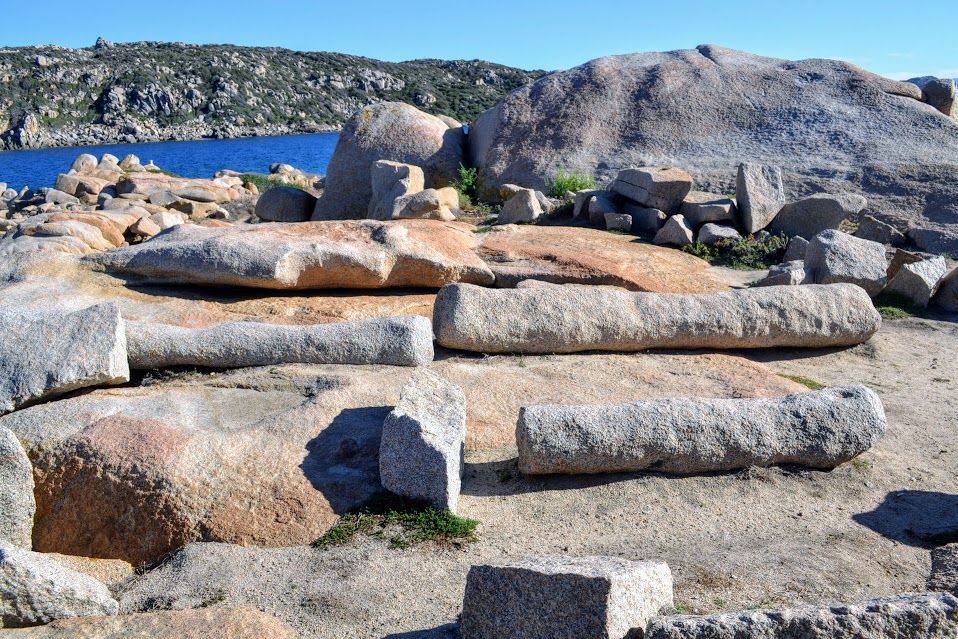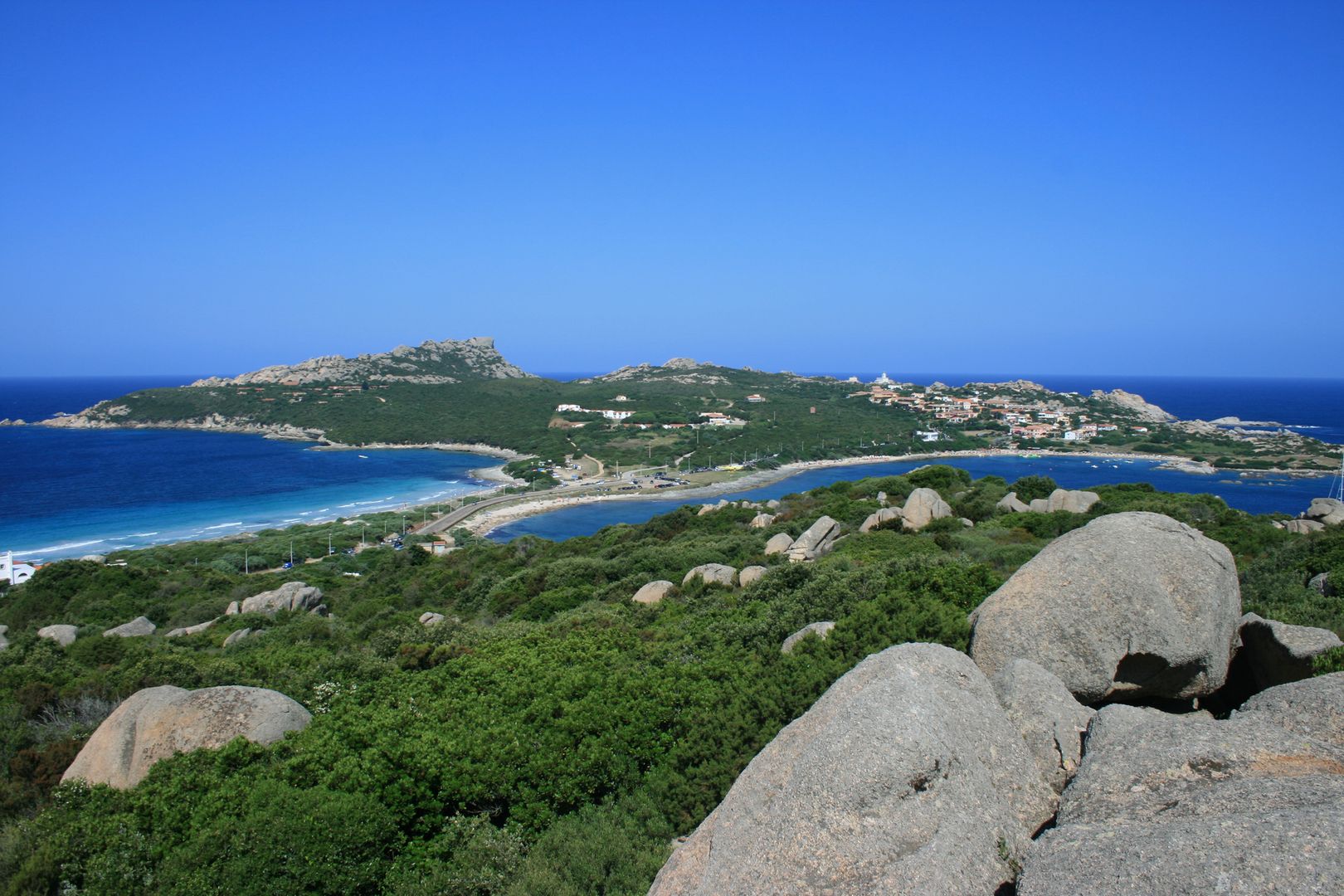SANTA TERESA
by John Warre Tyndale
The Island of Sardinia
London 1849
Richard Bentley, New Burlington Street. Publisher in Ordinary to Her Majesty
in italian: ![]()
Early in the fourteenth century the Aragonese placed a colony here, and built the castle of Longone on the side of the harbour at the extreme west end of the Monte Caresi. The remains shew an irregularity of construction; most of its sides, about 200 feet long, having been built according to the natural inclination of the ground, while the part towards the harbour takes the form of an arc of about 75°.
The first mention made of this castle is in 1388, when it was claimed by the Giudicessa Eleonora, on her victory in conjunction with the Gallurese, over the Aragonese. It is stated to have remained in the possession of the King of Aragon, though the Longonese affirm that a stone formerly existed in the castle on which, with other words, was engraved the name of Eleonora; and that the Ulese carried it off to La Madalena.
In 1391 a fresh Aragonese colony arrived at Longone, and occupied it till 1410, though constantly besieged and the scene of many severe conflicts. In that year Cassiano Doria, then lord of Castel Genovese, joined Artaldo di Alagon in blockading it, and eventually obliged the inhabitants to capitulate. The Aragonese, alarmed at their loss, – for at this period Longone was a very important stronghold, and place of commerce, – resolved on its recovery; but though Alfonso regained possession of it in 1420, it was taken two years afterwards by Francesco Spinola, who sacked it and carried off an immense booty to Genoa.
Alfonso having subsequently made himself master of it, to prevent a recurrence of these attacks ordered the castle and fortifications to be demolished. This was done in 1433, leaving only what is visible at the present day.
His life became a sacrifice to jealousy and vendetta, arising from an intrigue with the daughter of a miller residing at Osilo. His steps were closely watched; and it having been discovered that he was to visit her on a certain evening, her house was surrounded during the night with a number of his enemies, under the command of his rival, and on his departure at daybreak they fired a tremendous volley into him. His body – perfectly riddled – was seized, and after receiving every insult from his rival, his head was carried to Sassari, where it was fixed on a pole and exposed.
The colony succeeded very well under their newly appointed governor, till an alteration in the public pasture lands of the district, affecting the customary privileges and liberties of the shepherds, caused so strong a feeling against him, that he eventually fell a victim to their vendetta.
The Capes Della Testa, Del Falcone, and La Marmorata, are the districts from whence the Romans obtained many of the granite columns which still form some of the magnificent monuments of the Eternal city. Those of the Pantheon are said to have been excavated near Longone, and several similar as well as rude blocks may still be seen in the quarries of Capo La Testa on the promontory of Santa Reparata, near which the remains of some Roman villas have also been discovered.
In later days we find the value of the Gallura granite appreciated by the Pisans. Their Duomo, built by Buschetto in 1063, soon after their possession of Sardinia, shews the beauty of the Marmorata rocks; and the immense blocks used in the different parts of it were raised by a machine of so simple and condensed a power, that “ten girls, by working it, moved what vessels could hardly bring, and 1000 oxen could hardly raise.” This is recorded in an epigrammatic inscription preserved in their Duomo at Pisa […]
The Battisterio, built in 1152 by Dioti Salvi, has likewise much of Gallura material in its construction.
SOURCES OF ILLUSTRATIONS
19th Century Paintings, Drawings and Lithographs
Philippine La Marmora, Santa Teresa, ca 1854-1856, IN Luigi Piloni, Memorie sulla terra sarda: tempere inedite di Philippine de la Marmora (1854-1856), Cagliari, Fossataro, 1964.
Historical Archive of Torino, Plant of the foundation of the village designed by King Vittorio Emanuele I, 1807.
20th Century Painting
castle of Santa Teresa Gallura by Gigi Camedda, Collection of the Historical Archive of Santa Teresa
Contemporary drawings and photos
Rosanna Guspini, Gianfranco Galleri – wikimapia CC-BY-SA, Romano Stangherlin

